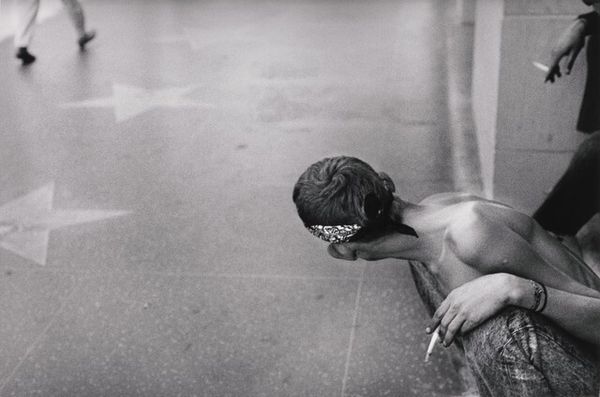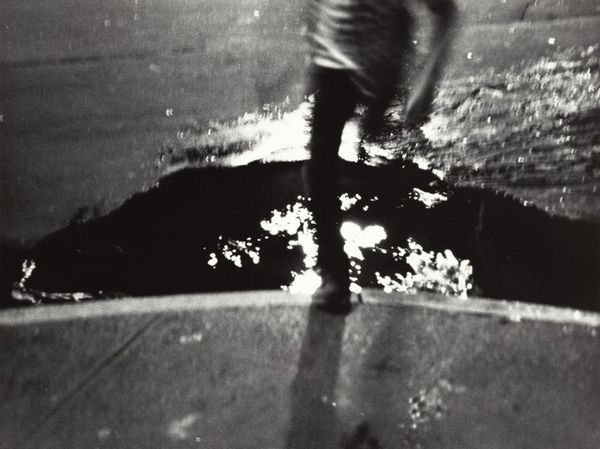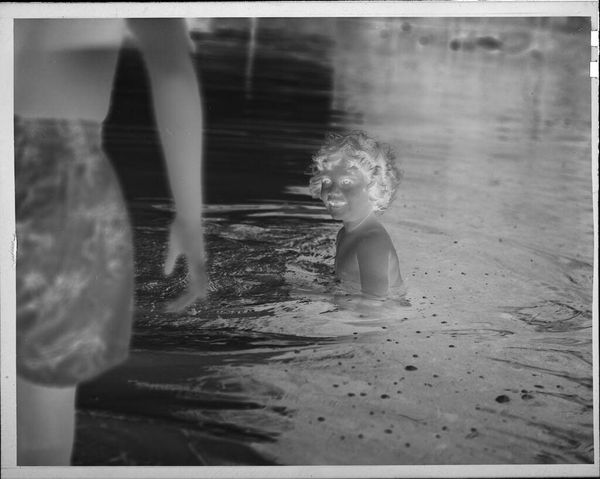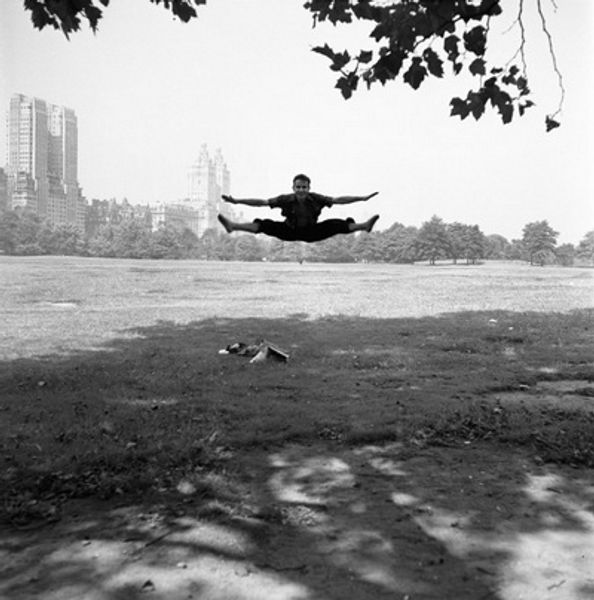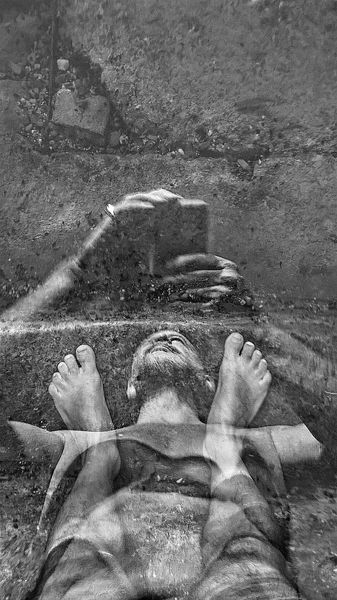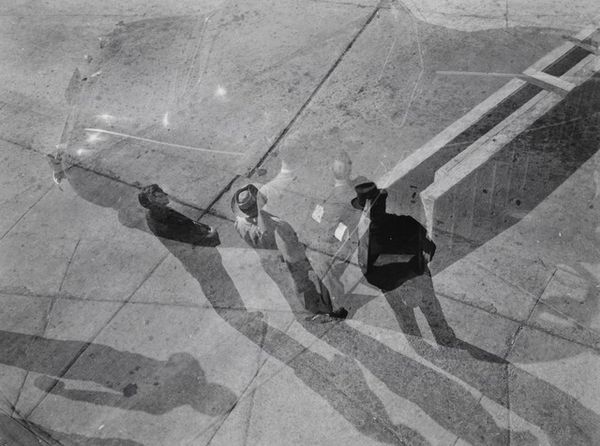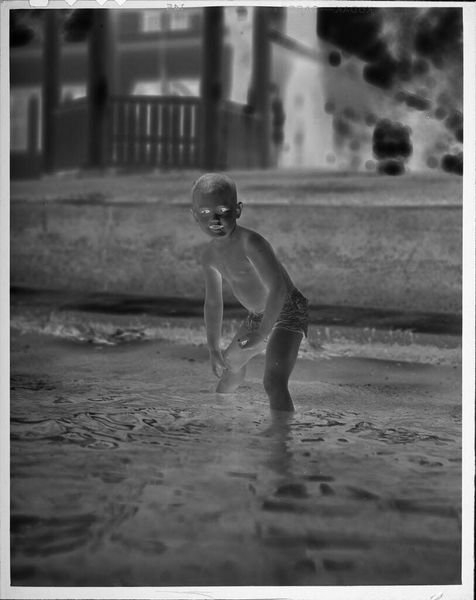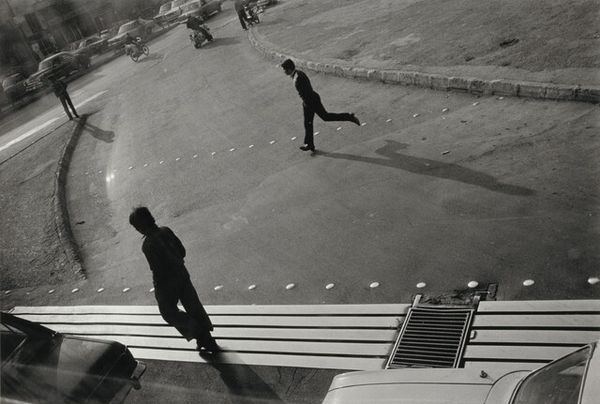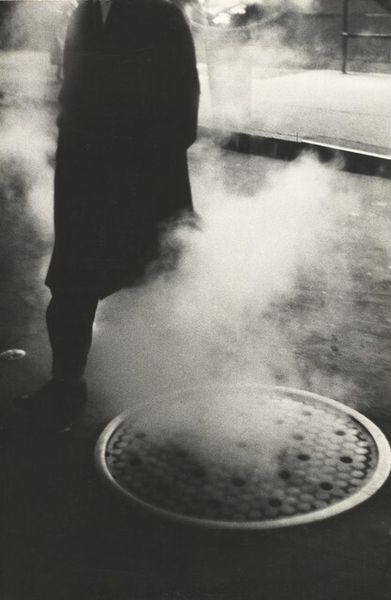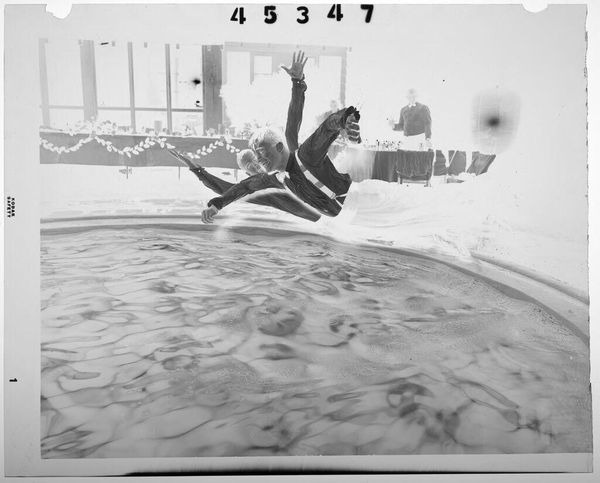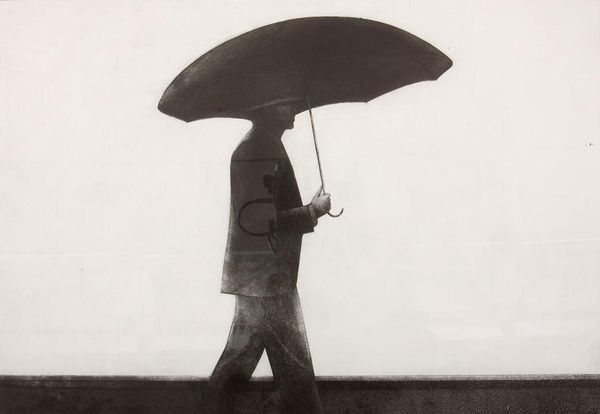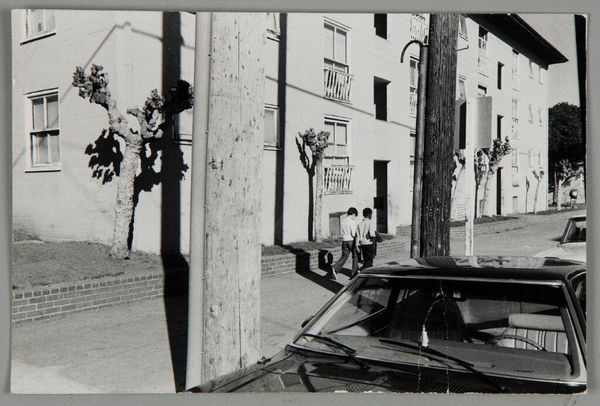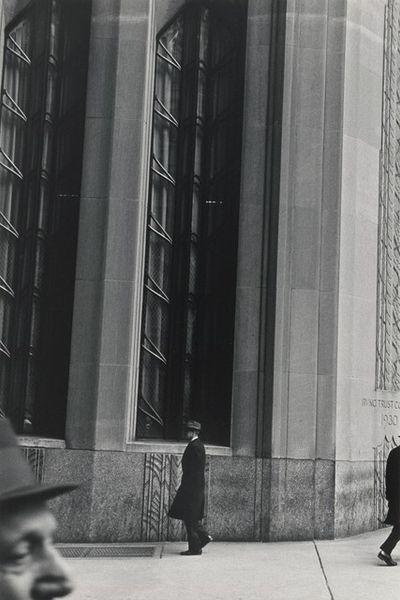
photography, gelatin-silver-print
#
contemporary
#
urban
#
building
#
street shot
#
urban cityscape
#
techno
#
figuration
#
street-photography
#
photography
#
industrial
#
urban life
#
gelatin-silver-print
#
street photography
#
street life
#
cityscape
#
urban background
Dimensions: image: 23.4 × 33.9 cm (9 3/16 × 13 3/8 in.) sheet: 27.9 × 35.3 cm (11 × 13 7/8 in.)
Copyright: National Gallery of Art: CC0 1.0
Curator: What a striking image. This is Louis Draper's gelatin-silver print, "Summer, New York City," estimated to be from somewhere between 1961 and 1979. Editor: The energy just leaps out at you. The stark contrast, the way the water scatters the light… it feels liberating, a release. Curator: Draper, as a founding member of the Kamoinge Workshop, was deeply invested in representing the Black experience with nuance and dignity. His work often countered prevailing negative stereotypes. In this piece, what do you see? Editor: I see pure joy, honestly. Look at that man in the foreground, arms outstretched, seemingly welcoming the deluge. There’s a carefree spirit, even amidst what looks like a fairly industrial urban setting. Is he finding freedom despite systemic constraints? Or perhaps it's a break, a joyful reprieve? The picture raises so many questions. Curator: That tension between the personal and the environmental is classic Draper. Consider the surrounding figures – the row of young people clustered together. The figures are grouped near the water source on the sidewalk. Are they waiting their turn? Do they reflect community and shared experience during these hot months? Editor: Precisely! And the city itself, pressing in, literally towering over them – brick and concrete and a looming presence. The high-contrast reinforces that stark reality, doesn’t it? We can assume it’s New York, but we don't know *where*. It’s Every-City, USA. Curator: And how do we consider access in this artwork? To a certain extent, water is a right. This hydrant, likely opened illegally, might offer the only relief from the heat in certain marginalized neighborhoods. What are we to do with such blatant acts of marginal joy and rebellion? Editor: It all resonates so strongly today, especially when we think about environmental justice and access to public resources. Seeing it reframed through that contemporary lens helps solidify this picture's significance. Curator: It shows that our histories—especially in the black community—are always current. These simple joys, often radical, serve as a blueprint for moving forward and finding community in what we have, rather than focusing on what we lack. Editor: An apt reminder of the complexities of the world we inhabit, and the resilient spirit that can thrive even in harsh conditions. I am so appreciative of such subtle beauty, resistance, and strength of community, such a well-articulated picture!
Comments
No comments
Be the first to comment and join the conversation on the ultimate creative platform.
